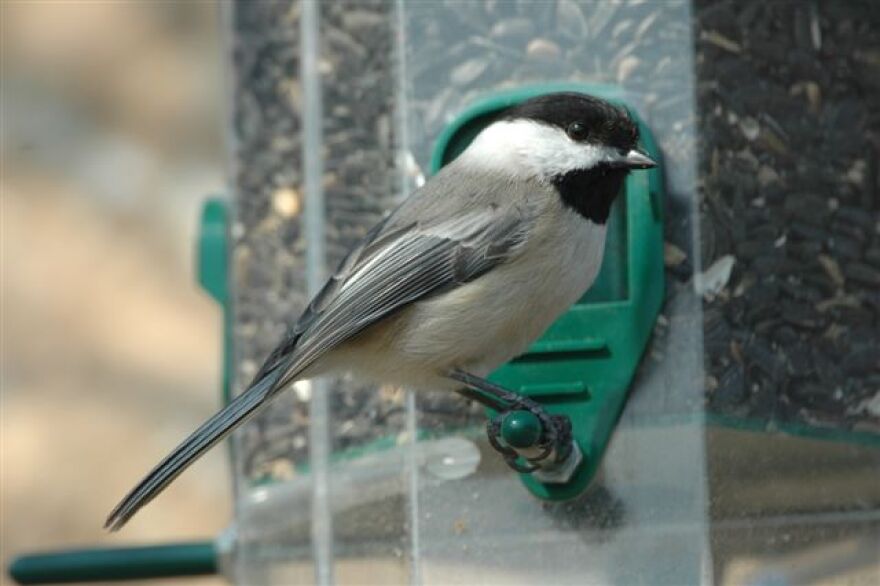SLATINGTON, Pa. — Annual bird counts are important, Chad Schwartz said, to better understand the local environment — and how it’s changing.
“Long-term bird counting projects give us an idea of how bird populations change over time,” said Schwartz, executive director of the Lehigh Gap Nature Center. “Such findings can reveal how human activity affects wildlife and, in turn, give us a chance to correct our actions if needed.”
From Friday through Sunday, the center is conducting its 27th annual Lehigh Gap Area Feeder Watch and officials are calling for volunteers. By engaging residents to record the number and type of birds close to the center for a few days each February, the long-term research project aims to track the quality of the environment over time, officials said, as well as engage community members in citizen science.
"While the scope of this project is limited to a 15-mile radius around Lehigh Gap Nature Center, the Feeder Watch stills helps us to understand how habitat loss, development, climate change and other factors might be impacting our local birds."Chad Schwartz, executive director of the Lehigh Gap Nature Center
“While the scope of this project is limited to a 15-mile radius around Lehigh Gap Nature Center, the Feeder Watch stills helps us to understand how habitat loss, development, climate change and other factors might be impacting our local birds,” Schwartz said. “For example, some bird species, such as the red-bellied woodpecker, have become more abundant as their range has expanded northward in recent decades.
“Other species, such as those dependent on grasslands, have declined.”
Last year, 48 residents volunteered with the LGNC’s Feeder Watch, recording more than 2,500 birds of 40 different species, officials said. Over 70,000 birds have been tallied over the past 26 years.

Why count birds?
Each year, the LGNC holds a few different bird counts as part of the center’s conservation research efforts.
For example, the center’s annual Bake Oven Knob raptor count ran from Aug. 15 to Nov. 24. Almost 11,000 birds of prey were counted this year.
“Since birds are excellent indicators of environmental quality, a long-term study like the Feeder Watch may provide valuable data about environmental quality in the study area,” officials said in a news release.
While data can be kept locally, with the researchers at the center, residents can also share their findings with the scientists around the globe.
The Cornell Laboratory of Ornithology and the National Audubon Society each year hold the “Great Backyard Bird Count,” a similar effort to record bird species each year to study how the data changes over time.
It launched a year after the start of the LGNC’s Feeder Watch, officials said.
“The Great Backyard Bird Count is a wonderful opportunity for families and friends to have fun while enjoying nature,” according to Cornell’s website. “If you are considering participating, take someone birding with you! Not only is birding an opportunity to connect with family and friends, it’s also an opportunity to connect with the great web that is the scientific community.
“Participating in the bird count is conducting citizen science, where families, educators and students contribute to scientific research.”
Last year, about 334,000 people counted 7,727 species of birds in 253 countries, according to Cornell’s website. This year’s Great Backyard Bird Count is scheduled for Feb. 16th through Feb. 19.
How can I participate?
There are only three requirements to participate in the LGNC’s Feeder Watch: living within a 15-mile radius of the center, having one or more bird feeders, and some bird identification knowledge.
“Volunteers are asked to spend a few hours throughout the day on February 9, 10 or 11 observing their feeders and recording any visitors,” according to an LGNC news release. “For each species, volunteers should record the maximum number of each species sighted at one time.
“This way, they will avoid counting the same birds more than once.”
Residents can get help identifying birds through Cornell’s bird guide, which has information on more than 600 species of North American birds.
Data can be submitted either electronically or via mail, but the deadline is Feb. 23.
Volunteers are needed, officials said, to gather enough data and increase the accuracy of the survey.
“In studies like these, more data yields better results,” Schwartz said. “We invite anyone within 15 miles of Lehigh Gap Nature Center to contribute data so we can learn more about our local bird populations.”
To find out more information, go to Lehigh Gap Nature Center’s website.


